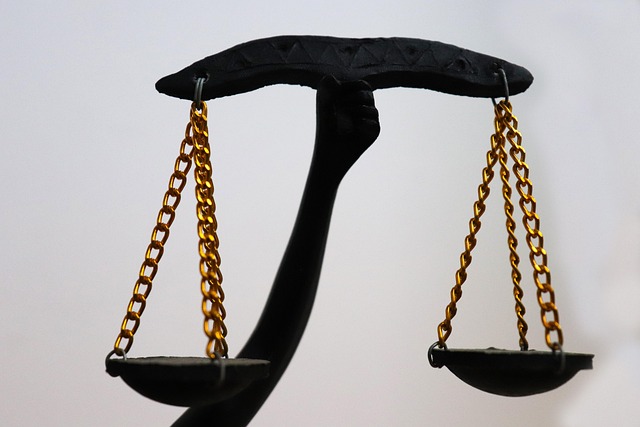Securities class actions empower investors to collectively pursue legal claims against entities involved in fraudulent or illegal securities activities, promoting fairness and equality in financial markets. By banding together, victims can hold companies and individuals accountable while protecting their Constitutional Rights during criminal trials, ensuring due process and fair treatment. These actions target violations like misrepresentations and conspiracy to defraud, aiming for complete charge dismissal. The process involves filing a complaint, notice to class members, discovery, negotiations, and settlements, achieving significant justice. However, balancing investor rights with defendant constitutional defenses poses unique challenges, requiring careful strategies throughout the investigative and enforcement stages.
Securities class actions play a pivotal role in protecting investors from fraudulent activities, ensuring accountability among corporations and their executives. This comprehensive guide delves into the intricate world of securities litigation, exploring key aspects such as understanding legal mechanisms, constitutional rights in criminal trials, grounds for action, procedural steps, and the impact and challenges of balancing investor protection with fairness. By examining these elements, we gain insights into how class actions serve as a powerful tool for justice and transparency.
- Understanding Securities Class Actions: An Overview of Legal Mechanisms
- The Role of Constitutional Rights in Criminal Trials: Protections for Accused Individuals
- When Securities Fraud Becomes a Class Action: Grounds for Legal Action
- Procedural Steps in Class Action Lawsuits: From Notice to Settlement
- Impact and Challenges: Balancing Investor Protection and Fairness in Class Actions
Understanding Securities Class Actions: An Overview of Legal Mechanisms

Securities Class Actions involve a unique legal mechanism that allows investors to collectively pursue claims against entities that have allegedly engaged in fraudulent or illegal activities related to securities. These actions are driven by the principle that every investor has the right to be treated fairly and equally, especially when dealing with financial markets. By banding together, victims of such misconduct can achieve extraordinary results, ensuring accountability and compensation for their losses.
This legal process is often a powerful tool in protecting the constitutional rights during criminal trials, particularly for those involved in general criminal defense. It enables philanthropic and political communities to hold companies and individuals accountable for securities-related crimes, which can have far-reaching impacts on the economy and society at large. Through class actions, investors can access legal resources that may otherwise be unavailable, fostering a fairer and more transparent financial landscape.
The Role of Constitutional Rights in Criminal Trials: Protections for Accused Individuals

In criminal trials, the Constitutional Rights of accused individuals play a pivotal role, ensuring fairness and due process. These rights are enshrined in legal frameworks to protect corporate and individual clients from arbitrary or unfair prosecution. During all stages of the investigative and enforcement process, suspects are entitled to certain inalienable protections. This includes the right to remain silent, ensuring that statements made can’t be used against them in court, and the right to legal counsel, allowing individuals to mount a robust defense.
Understanding these constitutional rights is crucial as they safeguard against potential abuses of power. For instance, avoiding indictment requires a thorough comprehension of these protections. Whether it’s through strategic legal arguments or evidence-based defenses, knowing one’s rights enables effective navigation of the criminal justice system, ensuring that corporate and individual clients are treated fairly and have a reasonable chance at a just outcome.
When Securities Fraud Becomes a Class Action: Grounds for Legal Action

When Securities Fraud becomes a class action, it’s a significant shift from individual lawsuits to collective legal action. This change occurs when multiple investors suffer similar losses due to fraudulent activities by corporations or individuals. Class actions are powerful tools for achieving extraordinary results in cases where the scale of deception is vast. By pooling resources and sharing legal strategies, investors can hold wrongdoers accountable and seek compensation for their collective harm.
The grounds for legal action in securities fraud cases often revolve around violations of constitutional rights during criminal trials. While criminal defenses primarily focus on general criminal charges, class actions delve into specific instances where investor rights were compromised. These include misrepresentations or omissions of material facts, conspiracy to defraud, and breach of fiduciary duty. When these acts result in substantial financial losses for a large number of investors, it justifies a class action lawsuit aiming for complete dismissal of all charges against the defendants.
Procedural Steps in Class Action Lawsuits: From Notice to Settlement

Class action lawsuits are a powerful tool for holding corporations and individuals accountable for wrongful actions that affect large groups of people. The procedural steps in these cases can be complex, but they generally follow a structured path from notice to settlement. It begins with the filing of a complaint by one or more representatives on behalf of a class of similarly situated individuals, often those who have suffered losses due to white-collar and economic crimes.
Notice is then provided to all class members, informing them of their right to participate or opt out of the lawsuit. This process ensures that every individual has a chance to voice their concerns. Throughout the litigation, both parties engage in extensive discovery, where documents, depositions, and expert testimony are exchanged. This phase is critical for building a strong case and evaluating the potential merits of the dispute. Eventually, negotiations lead to a settlement, where the defendant agrees to compensate the class for their collective injuries, often achieving extraordinary results for clients who have been wronged.
Impact and Challenges: Balancing Investor Protection and Fairness in Class Actions

Securities class actions play a pivotal role in balancing investor protection and fairness. While they aim to hold wrongdoers accountable and restore lost investments, the process presents unique challenges. One of the primary considerations is striking a delicate balance between protecting the constitutional rights of defendants during criminal trials and ensuring justice for aggrieved investors. The right to due process and a fair trial are fundamental principles, yet their application in class action settings can be complex.
Defendants often argue for a complete dismissal of all charges, contending that the respective business practices were not malicious but rather subject to legal interpretation. Navigating this argument while upholding investor rights requires a meticulous approach. The complexities deepen when considering all stages of the investigative and enforcement process, emphasizing the need for transparent procedures and robust safeguards. Effective class action strategies must address these challenges head-on to ensure that justice is served without compromising fairness or due process.
Securities class actions serve as a powerful mechanism to protect investors, ensuring fairness and accountability. By understanding the intricate balance between investor protection and procedural challenges, we can strengthen legal safeguards. The role of constitutional rights in criminal trials is pivotal, providing accused individuals with vital protections. When securities fraud crosses the line into class action territory, it’s essential to recognize the grounds for legal action. Through meticulous procedural steps, from notice to settlement, these lawsuits can bring about positive change and balance the complexities inherent in investor protection.






